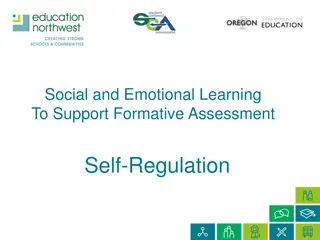Learning About Self-Introduction and Family Members in Grade 1
In this unit of inquiry, Grade 1 students will explore self-introduction phrases like "What's your name?" and "My name is...". They will also learn words related to family members and how to use measure words in Mandarin. Students are encouraged to draw their family tree and understand colloquial expressions. The content provides examples and images to aid in learning.
Download Presentation

Please find below an Image/Link to download the presentation.
The content on the website is provided AS IS for your information and personal use only. It may not be sold, licensed, or shared on other websites without obtaining consent from the author.If you encounter any issues during the download, it is possible that the publisher has removed the file from their server.
You are allowed to download the files provided on this website for personal or commercial use, subject to the condition that they are used lawfully. All files are the property of their respective owners.
The content on the website is provided AS IS for your information and personal use only. It may not be sold, licensed, or shared on other websites without obtaining consent from the author.
E N D
Presentation Transcript
Grade 1 UOI 3 (Nov 2022): We will be learning about 1. self introduction using (What's your name?) ... (My name is ...), (I don't know) Chinese radical of mouth ( ). 2. The words about family members; related words (how many/how much) (general used measure word) (measure word for family members) (there is/have) (the negation word, means no/not") Chinese radical of treasure ( ).
What is your name ? N ji o sh nme m ngz ? What is your name ? W ji o h l . My name is Harry.
I dont know W = I b = not zh d o = know I know = W zh d o I don t know = W b zh d o
Family members Ji t ng ch ng yu n 1. b ba father 2. m ma mother 3. g ge older brother 4. ji jie older sister 5. d di younger brother 6. m imei younger sister 7. y ye 8. n inai 9. w ig ng / l oy 10. w ip / l olao paternal grandpa paternal grandma maternal grandpa maternal grandma Task: Student may draw about their own family tree.
Family members Ji t ng ch ng yu n Colloquial language and expressions could be things like informal words, phrases, and slang words. They used by writers to create a sense of community and society. Often, the way an author speaks will translate into their writing.
Family members Ji t ng ch ng yu n
General measure word Structure: number + measure word + noun
Use / ling before measure words to say two.. Structure: number + measure word + noun We use / li ng before measure words to say two .. Example: Li ng g p nggu Two apples.
General measure word Structure: number + measure word + noun number Measure word noun meaning one apple two apples Three apples Four apples Five apples Six apples Seven apples Eight apples Nine apples Ten apples Eleven apples Twenty apples
General measure word Structure: number + measure word + noun number Measure word noun meaning one apple two persons Three teachers Four mangoes Five students Six doctors Seven water bottles Eight dragon-fruits Nine peers Ten apples Eleven apples Twenty oranges
vs [y u] = have / has [m iy u] = not have / has G ge y u p nggu Older brother has apple. G ge y u li ng g p nggu Older brother has two apples. G ge m iy u li ng g p nggu Older brother doesn t have two apples.
Structure: + measure word + noun k u is a measure word. j k u r n = how many people
N ji y u j k u r n? = How many people are there in your family? W ji y u w k u r n. = There are five people in my family
Shyun Siheyuan, also known as Sihefang, is a traditional courtyard building in China. Its pattern is that houses are built on all sides of a courtyard, and the courtyard is enclosed in the middle from all sides, so it is called Siheyuan.
What is Chinese radical ? Chinese radical is often mentioned as radical . In Mandarin we call it pi n p ng b sh u Radical is the part or component of Hanzi (Chinese character) that has specific meaning and used as the main part to search Hanzi in the dictionary.
Why do we need to learn Radical ? In order to strengthen our memory to read and write the Chinese character.
(radical of roof) [B o g i t u] ji = home sh = room t = it n = safe
(radical of mouth) K u z p ng ji o = call ch = eat h = drink t ng = listen/hear























